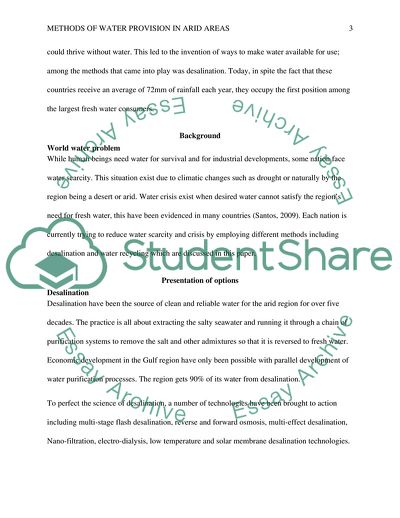Cite this document
(Methods of Water Provision in Arid Areas Essay Example | Topics and Well Written Essays - 1750 words, n.d.)
Methods of Water Provision in Arid Areas Essay Example | Topics and Well Written Essays - 1750 words. https://studentshare.org/engineering-and-construction/1805678-recommendation-report-discussing-two-solutions-of-water-provision-methods-for-an-arid-region
Methods of Water Provision in Arid Areas Essay Example | Topics and Well Written Essays - 1750 words. https://studentshare.org/engineering-and-construction/1805678-recommendation-report-discussing-two-solutions-of-water-provision-methods-for-an-arid-region
(Methods of Water Provision in Arid Areas Essay Example | Topics and Well Written Essays - 1750 Words)
Methods of Water Provision in Arid Areas Essay Example | Topics and Well Written Essays - 1750 Words. https://studentshare.org/engineering-and-construction/1805678-recommendation-report-discussing-two-solutions-of-water-provision-methods-for-an-arid-region.
Methods of Water Provision in Arid Areas Essay Example | Topics and Well Written Essays - 1750 Words. https://studentshare.org/engineering-and-construction/1805678-recommendation-report-discussing-two-solutions-of-water-provision-methods-for-an-arid-region.
“Methods of Water Provision in Arid Areas Essay Example | Topics and Well Written Essays - 1750 Words”. https://studentshare.org/engineering-and-construction/1805678-recommendation-report-discussing-two-solutions-of-water-provision-methods-for-an-arid-region.


